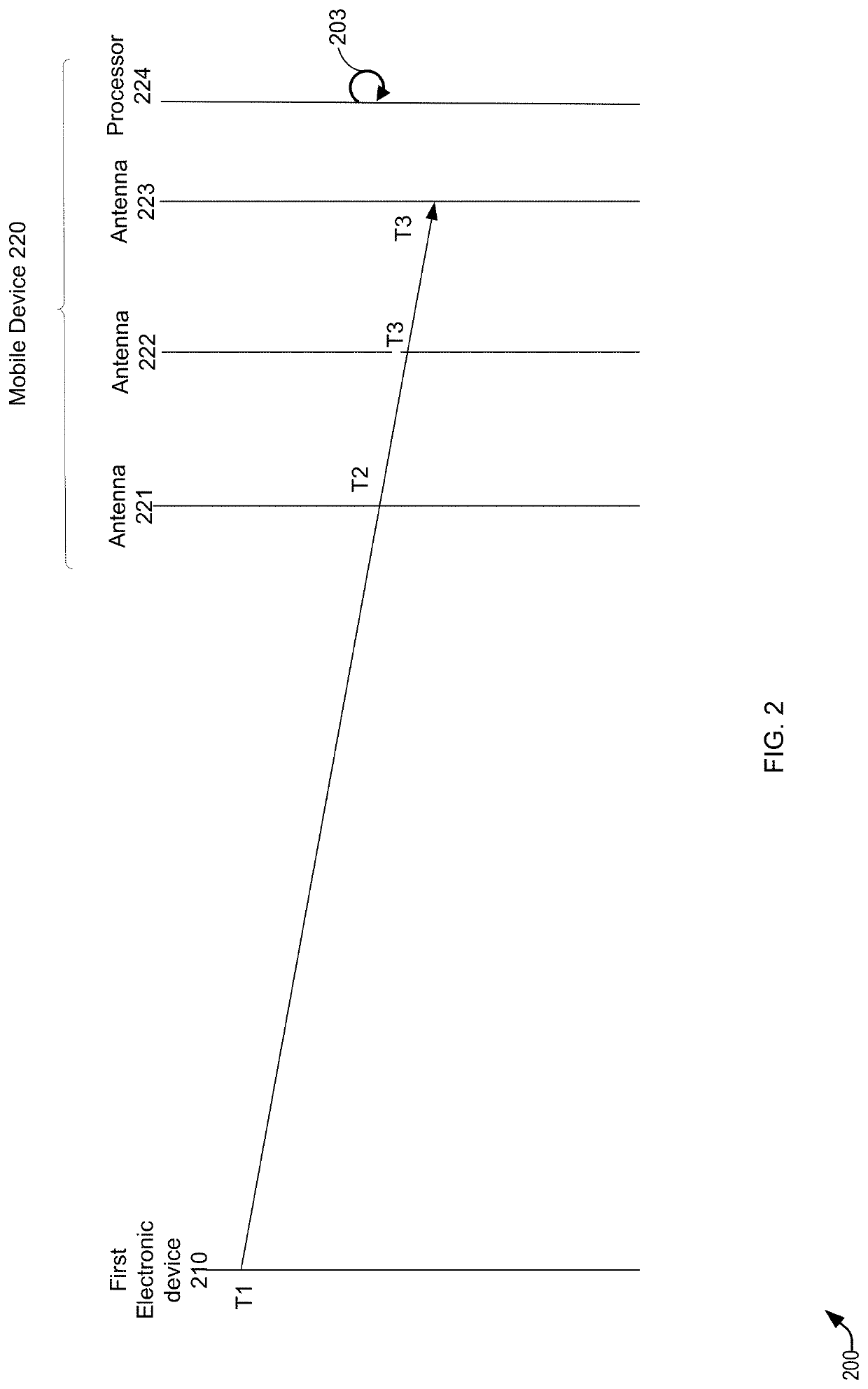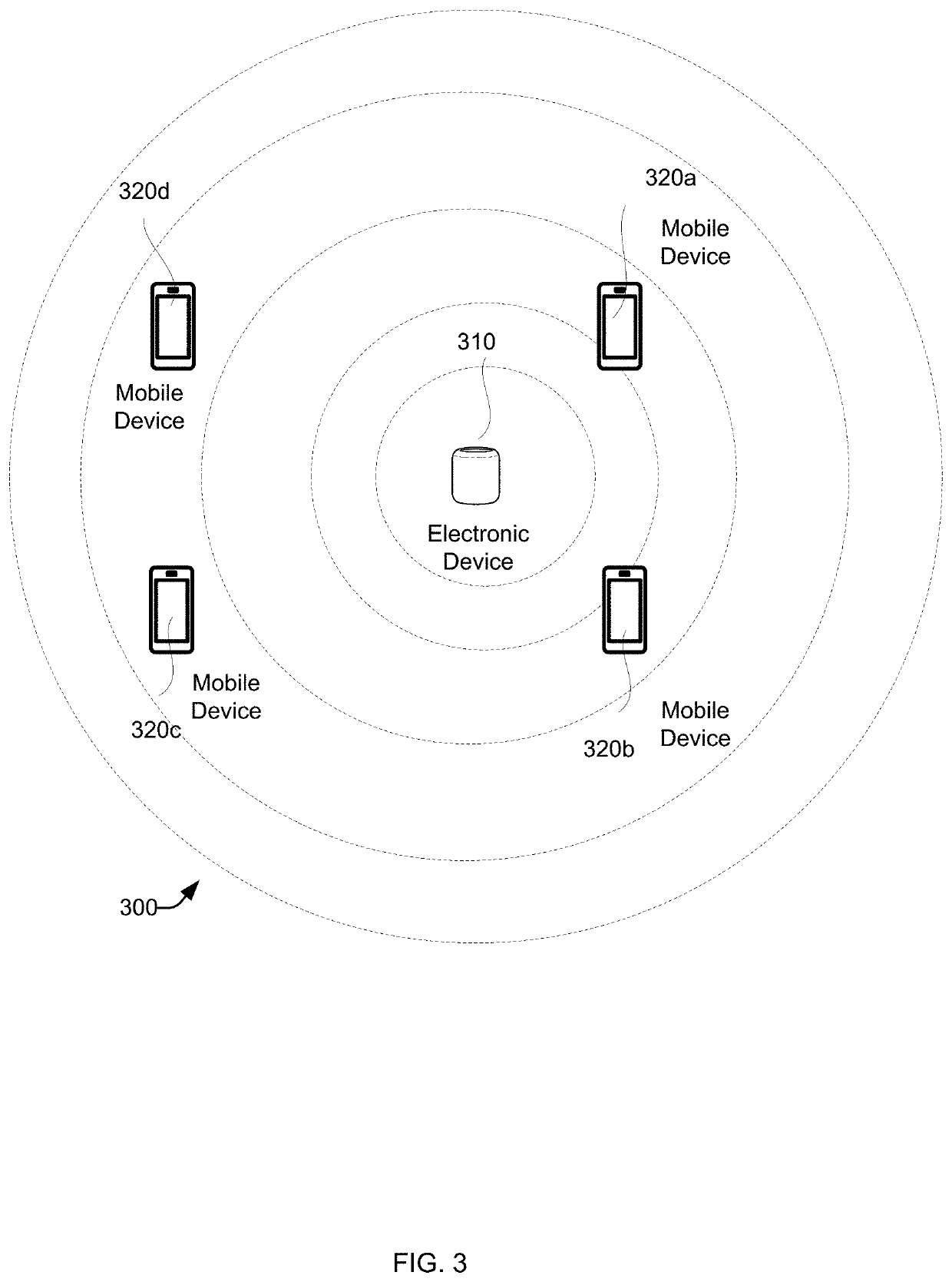Techniques for changing frequency of ranging based on location of mobile device
a mobile device and frequency technology, applied in the field of changing the frequency of ranging based on the location of mobile devices, can solve problems such as draining battery life, and achieve the effect of conserving battery li
- Summary
- Abstract
- Description
- Claims
- Application Information
AI Technical Summary
Benefits of technology
Problems solved by technology
Method used
Image
Examples
Embodiment Construction
[0025]Certain embodiments are directed to techniques (e.g., a device, a method, a memory or non-transitory computer readable medium storing code or instructions executable by one or more processors) for communication techniques between an electronic device (e.g., a smart speaker, a smart TV, a smart appliance, etc.) and one or more mobile devices (e.g., a smartphone, a tablet, a wearable device etc.). Techniques can vary the rate the mobile device responds to ranging messages from the electronic device (e.g., in response to messages from the smart speaker) based on one or more factors. These factors can include a state of the mobile device (e.g., awake or asleep), mobile device orientation (e.g., face down), application state (e.g., music App active), motion of the mobile device (e.g., at rest for period of time), and a relative position (distance / angle) between the mobile device and the speaker to conserve battery life.
[0026]Mobile devices can provide an audio stream (e.g., music, ...
PUM
 Login to View More
Login to View More Abstract
Description
Claims
Application Information
 Login to View More
Login to View More - R&D
- Intellectual Property
- Life Sciences
- Materials
- Tech Scout
- Unparalleled Data Quality
- Higher Quality Content
- 60% Fewer Hallucinations
Browse by: Latest US Patents, China's latest patents, Technical Efficacy Thesaurus, Application Domain, Technology Topic, Popular Technical Reports.
© 2025 PatSnap. All rights reserved.Legal|Privacy policy|Modern Slavery Act Transparency Statement|Sitemap|About US| Contact US: help@patsnap.com



